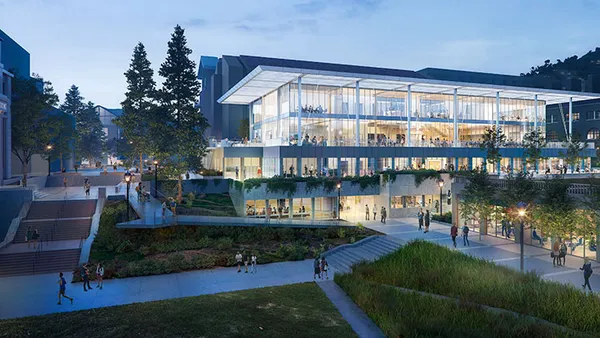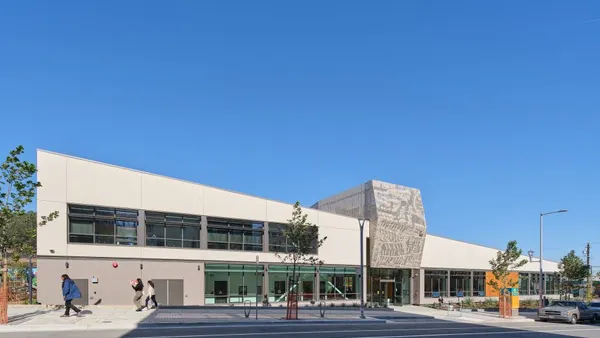Dive Brief:
- Digital manufacturing company 3Diligent Corp. recently announced that it is printing aluminum curtain wall components for cladding firm Walters & Wolf's work on the 1.7 million-square-foot, mixed-use Rainier Square Tower currently under construction in Seattle.
- Each of the 140 v-shaped nodes, which will help achieve the building's distinctive sloping from the fourth to 40th floor, was custom fabricated using 3D printing technology and manufactured to meet the unique geometry of each section of the 59-story building, 3Diligent said. The nodes will bring together square-cut pieces of curtain wall and accommodate a different angle for the nonstructural cladding on each floor of the building, which is expected to be Seattle's second-tallest and estimated to cost between $570 million and $600 million.
- Walters & Wolf settled on 3D printing "because of the dimensional accuracy and structural reliability it gave,” said Designer Jon Ishee in a case study. Printing the components also helped meet schedule goals, the company said, even when design changes toward the end of the project required additional supports on certain levels.
Dive Insight:
A variety of 3D printing processes can deliver traditional construction materials — metal, concrete, plastic — with precision. As such they are continuing to increase the feasibility of complex designs, like the curtain wall nodes for the mixed-use Rainier Square Tower, without creating time-consuming, labor-intensive tasks for a short supply of craftsmen.
Rainier Square Tower is also an example of how 3D printing is continuing its journey out of the realm of prototypes and into real-world applications.
MX3D's 3D-printed, stainless steel bridge — designed by Joris Laarman Lab — is scheduled to be installed this year across one of Amsterdam’s oldest canals, Oudezijds Achterburgwal. The 10,000-pound, 12.5-meter-long bridge took six months to build using four industrial robots and has been undergoing structural integrity testing. Construction equipment has also been the beneficiary of 3D printing technology, as Volvo revealed last year that it had started to print aftermarket parts for heavy equipment. The manufacturer said this method of manufacturing would be particularly useful in providing parts for older machines no longer in production.
The U.S. military has also turned out to be a big backer of 3D printing technology, having used it in at least two recent field applications. Last month, the 1st Marine Logistics Group at Camp Pendleton in California completed construction of a functional, 3D-printed concrete footbridge — representing the first time in the Western Hemisphere that a bridge was printed onsite instead of in a factory setting. And in August, the Marines 3D-printed a 500-square-foot barracks building in just 40 hours.













